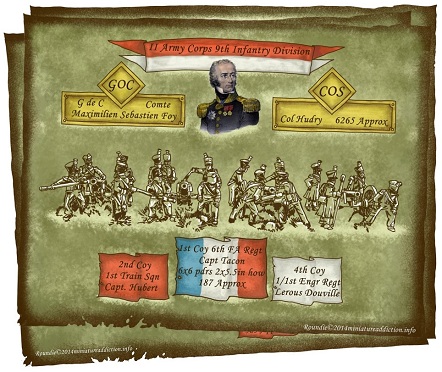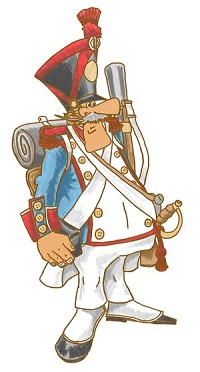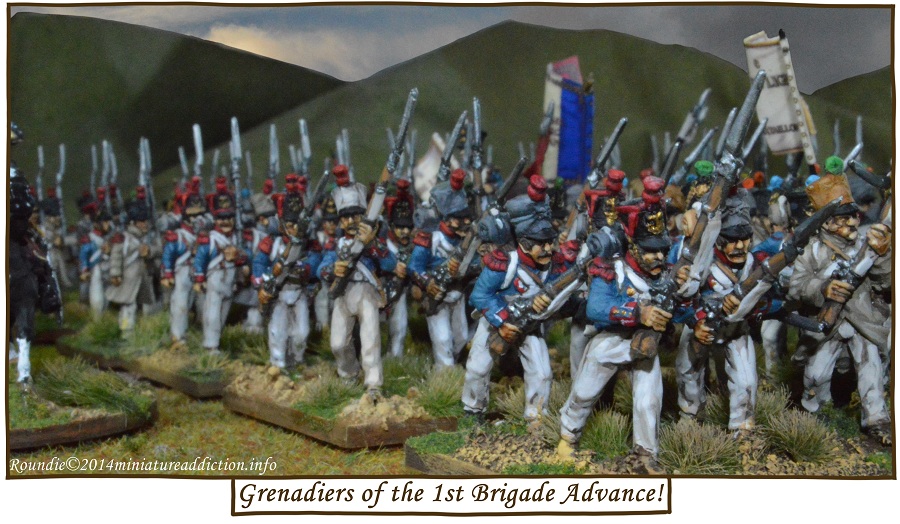
Both Brigades of the 9th Division were heavily engaged at Quatre Bras on the 16th. Gauthier’s 1st brigade supported Jamin’s 2nd which had formed up with the entire 5th division just after two o’clock for Ney’s first attempt at securing the crossroads. With the arrival of Jerome’s 6th division on the French left, Foy now formed the centre of Ney’s line. Here Both brigades were to spend the day involved in the struggle for Gemioncourt.
At Waterloo the 9th division was stationed between Jerome’s 6th division and Bachelu’s 5th on the French left flank. Tissot’s 1st brigade (Gauthier being wounded at Quatre Bras) was committed to Jerome’s fruitless attempts at gaining control of Hougoumont at around 1.15pm . The brigade was to spend the rest of the day embroiled in the continual fighting based in and around the great orchard, before finally being pushed back by concentrated Allied attacks at 7.00-7.30pm.
The 1st, 2nd & 3rd Battalions of the 93rd Line Regiment

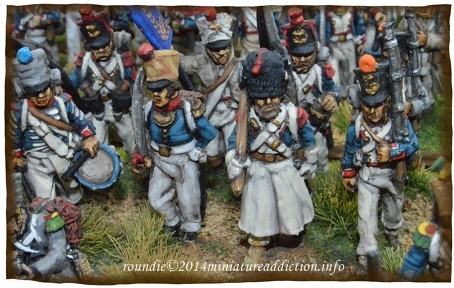
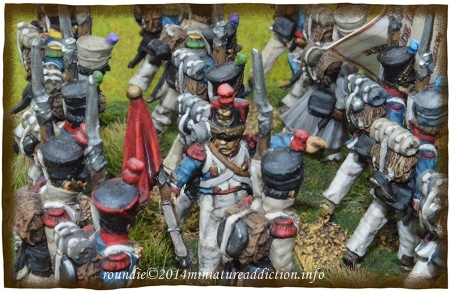

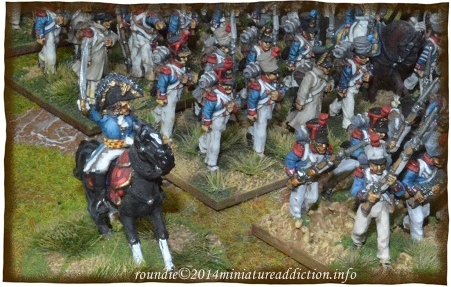
Uniforms
Pictured below is a basic uniform guide for the 92nd and 93rd regiments which combine to form Foy’s 1st infantry brigade of the 9th division. The epaulettes shown on the voltigeur are from the 93rd regiment, while those labeled C are common variations and example D is from the 92nd. Epaulettes A and B are augmented with gold lace and were worn respectively by voltigeur and grenadier sergeants. The magnifying-glass symbol details the badges on the coat turn-backs.
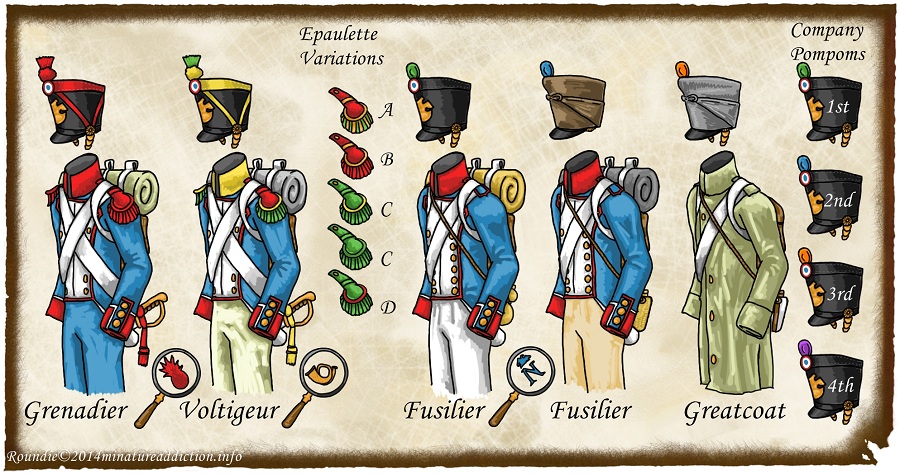
The 1812 uniform regulations made an attempt to standardise musicians uniforms by introducing a “Imperial Livery” green coat with Imperial lace of alternating yellow and green segments. It was never universally adopted hence the blue coat pictured below.
Each premier porte-aigle (Eagle-bearer) was accompanied by two senior NCO escorts (2nd and 3rd porte-aigle) who carried halberds. Attached to these halberds were triangular fanions (streamers) measuring approx 61cm x 20cm, red for the NCO to the right of the Eagle-bearer, white to the left. Both were embroidered in gold lettering, the regiment’s number on one side and Napoleon’s name on the other. Les Uniforms (my main resource for these drawings) suggests that due to the short time frame of this campaign these may not have been present in the regiments and as such elected to show two musket armed sergeant majors as the colour guard. I have included my approximation of the 2nd and 3rd porte-aigle because, well I have the models and wanted to paint them.
It should be noted that I am by no means an authority on Napoleonic history or uniforms. While I have done my best to ensure these guides are correct, they are however only based on my limited research. If you would like a more complete guide to these uniforms I would suggest checking out Les Uniformes pendant la campagne (a French site).

The 1st & 2nd Battalions of the 92nd Line Regiment
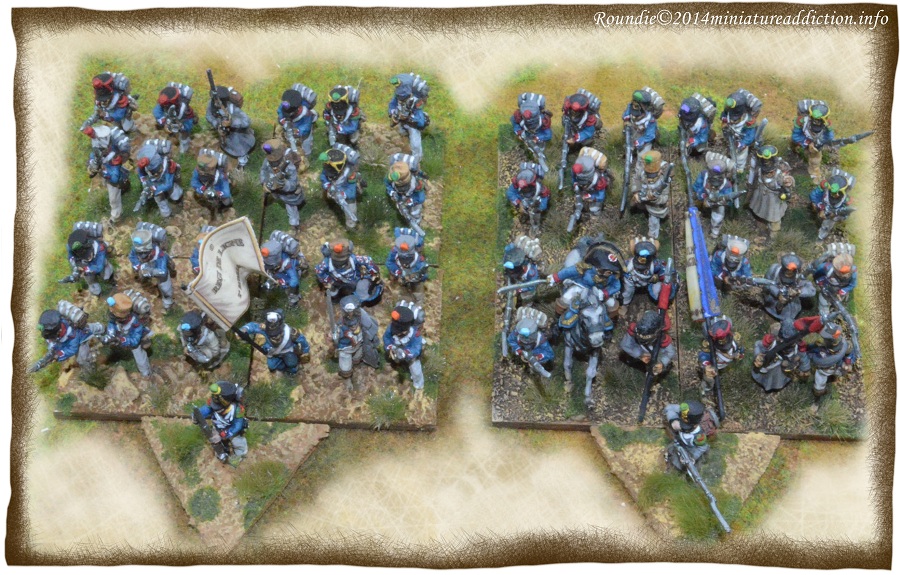
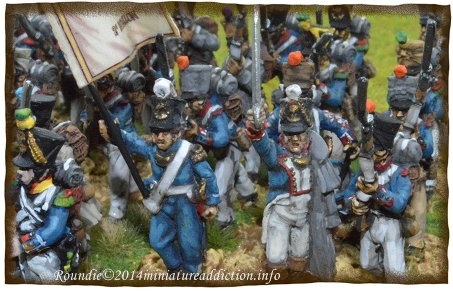
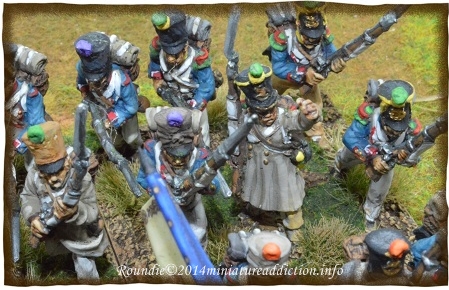

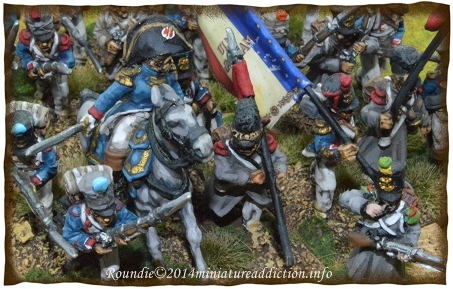
Battalion Basing Strategy
Each 24 man battalion is based on 4×50/50/3mm laser cut plywood stands. The 1st battalion of each regiment contains 22 foot and one mounted officer (the regiments commander). Figures are arranged so when the battalion is placed in line formation each company is in its historically correct position. All Skirmishers are based on 50/3mm plastic triangles. There are no rule requirements for triangle bases (anywhere that I know of)…. but, I like them so I did it anyway.
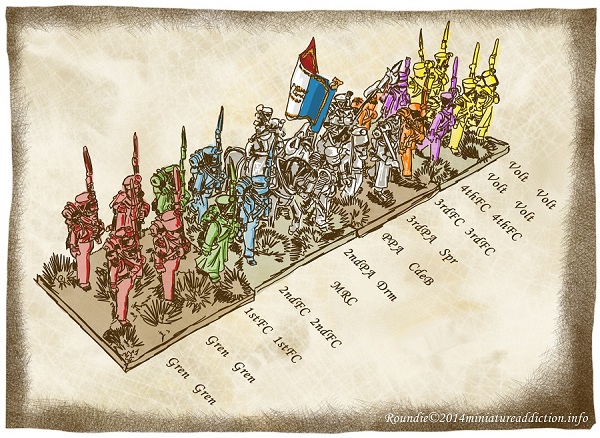
Gren: Grenadier
Volt: Voltigeur
4thFC: 4th Fusilier Company
3rdFC: 3rd Fusilier Company
2ndFC: 2nd Fusilier Company
1stFC: 1st Fusilier Company
PPA: Premier Porte-Aigle
2ndPA: 2nd Porte-Aigle
3rdPA: 3rd Porte-Aigle
DRM: Drummer
CdeB: Chef de Battalion
MRC: Mounted Regimental Colonel
